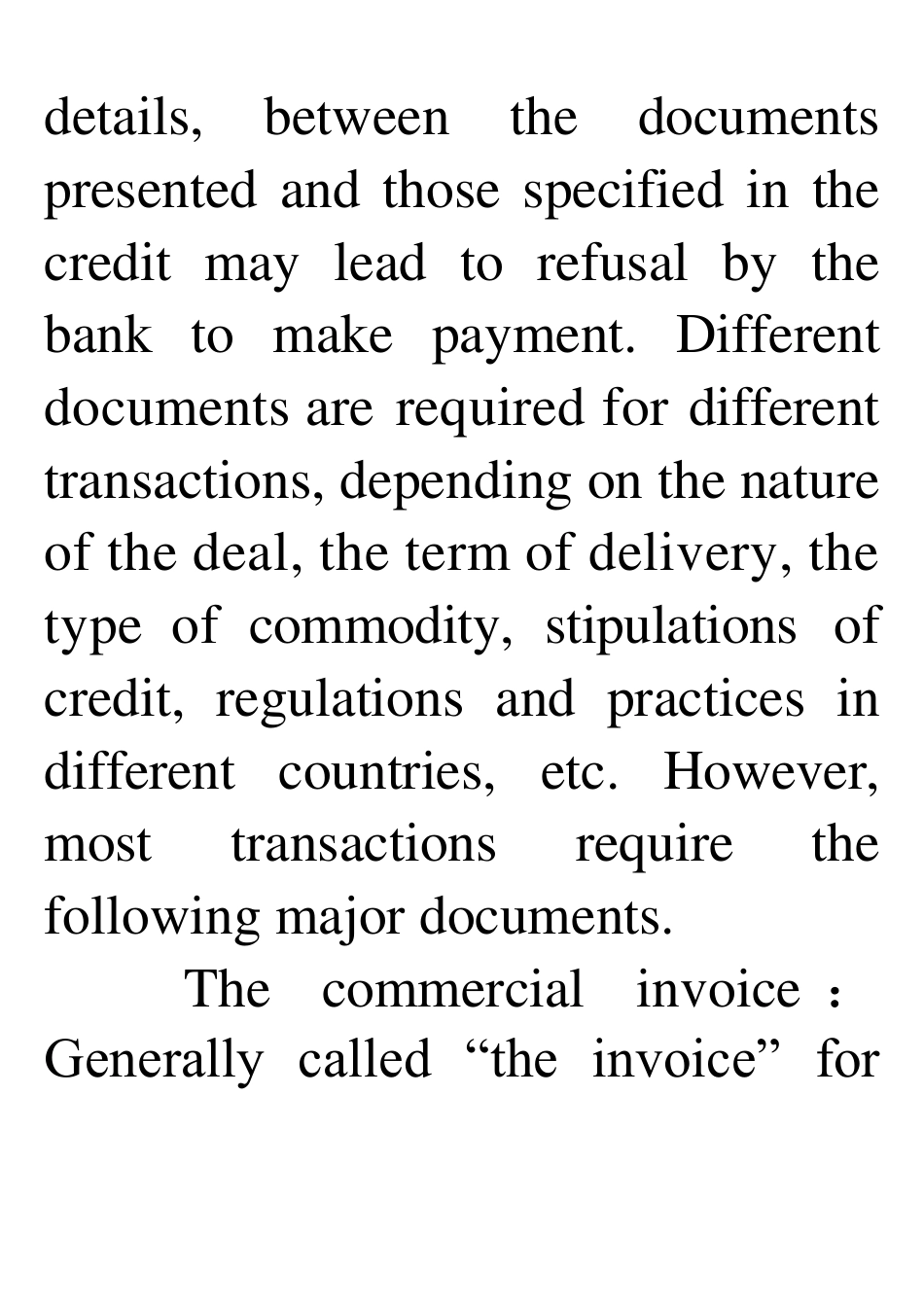One of the major differences between domestic trade and foreign trade is documentation (单据的使用). Every shipment must be accompanied by a number of correct documents. If they are not the correct ones, the importer will have difficulties in taking delivery of 提货the goods, and delays caused by incorrect documentation may affect future business relations between the trading partners. In the case of documentary letter of credit, any discrepancy 不同, even in minor details, between the documents presented and those specified in the credit may lead to refusal by the bank to make payment. Different documents are required for different transactions, depending on the nature of the deal, the term of delivery, the type of commodity, stipulations of credit, regulations and practices in different countries, etc. However, most transactions require the following major documents. The commercial invoice :Generally called “the invoice” for short, this document is the general description of the quality and quantity of the goods and the unit and total price. It constitutes the basis on w hich other documents are to be prepared 制作, and the banks check the conformity between credit terms and documents 单证一致 and the conformity between the documents 单单一致. A commercial invoice normally include the following contents: Invoice number and the date; name and address of the buyer and the seller; contract number and credit number; description of the goods including name of the commodity, quantity, specifications, etc.; unit price, total price, price terms, and commission and discount if any; terms of delivery and terms of payment; packing, shipping marks 唛头, etc.; and seal or signature of the exporter. It should ...


